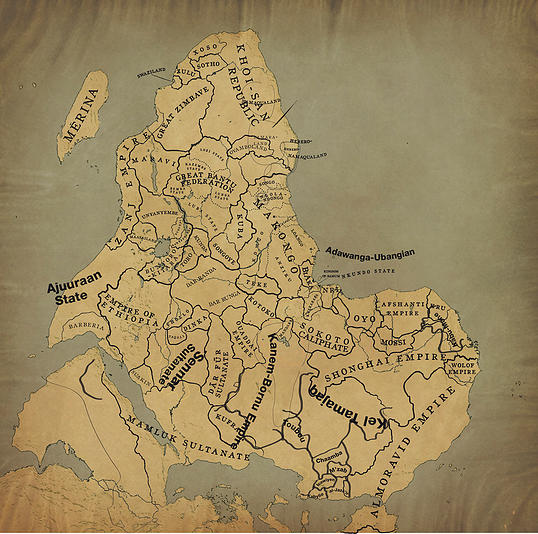I recently watched a documentary with a friend of mine. It’s on Amazon Prime and it’s called “4 Presidents.”
Edit: Here’s the link
4 Presidents (2020) - IMDb
So this documentary tells the story of how there is one MAJOR connection between the assassinations of Lincoln, Garfield, McKinley and Kennedy.
So here’s the shyt I learned that had me going








1.) The U.S. Treasury is completely different from the Federal Reserve.
I’m sure I learned this shyt in middle school social studies class but
Ain’t nobody paying attention to that shyt day to day and why is it even important?!

2.) Well it’s important because the rich asses that own the Federal Reserve are private bankers who don’t work for the government.
These evil geniuses literally print money and give it to the U.S. and we gotta pay it back...with BIG ASS INTEREST.
Sounds fukked up, right?!!

Well has anybody ever tried to DO something about it?
YEP....and all of em got taken the hell out.
Fukking crazy! Every American president who went up against the Federal Reserve got shot.

Who the FUKK ARE THESE PEOPLE?!!!

When i first got to America I used to shout this everyday.
The money created by the FED isnt even real. They just add zeroes to the end of a digital log. IT IS COMPLETELY FAKE AND BASED ON NOTHING. Thats how they can print how much ever they want. There is no limit. The money becomes real when the treasury prints it to borrow it to the US govt who gives it to you. let me google an actual economist because im pretty sure im making some errors:
It is common to hear people say the Fed prints money.
That’s not technically correct. The Bureau of Engraving and Printing, an agency of the U.S. Treasury,
does the printing. The Fed, for its part, purchases cash from the bureau at cost and then puts it in circulation.
Although you may have heard some economists talk about the Fed figuratively
dropping cash from helicopters, its method of distribution isn’t quite as colorful. Instead, it gives banks cash in exchange for old, worn-out notes or digital balances held by the banks at the Fed. In this way, the Fed can help banks accommodate changes in demand for banknotes, like those in advance of
major holidays or after
natural disasters.
These exchanges are dollar-for-dollar swaps. The Fed does not typically increase the
monetary base – the total amount of currency in circulation and reserves held by banks at the central bank – when it distributes new banknotes.
Magicking green
To put more money into circulation, the Fed typically purchases financial assets.
To understand how, one must first recognize that the Fed is a bankers’ bank. That is, banks hold deposits at the Fed much like you or I might hold deposits in a checking account at Chase or Bank of America. That means
when the Fed purchases a government bond from a bank or makes a loan to a bank, it does not have to – and usually doesn’t – pay with cash. Instead, the Fed just credits the selling or borrowing bank’s account.
The Fed does not print money to buy assets because it does not have to. It can create money with a mere keystroke.
So as the Fed buys Treasuries, mortgage-backed securities, corporate debt and other assets
over the coming weeks and months,
money will rarely change hands. It will just move from one account to another.
Costs of magical money
While the Fed can create money out of thin air, that does not mean it does so without cost. Indeed, there are two potential costs of creating money that one should keep in mind.
The first results from inflation, which denotes a general increase in prices and, correspondingly, a fall in the purchasing power of money. Money is a highly liquid – easily exchangeable – asset we use to make purchases. When the Fed creates more money than we want to hold on to, we exchange the excess money for less liquid assets, including goods and services. Prices are driven up in the process. When the Fed does this routinely, expected inflation gets built into long-term contracts, like mortgages and employment agreements. Businesses incur costs from having to
change prices more frequently, while consumers have to
make more frequent trips to the bank or ATM.
The other cost is a consequence of reallocating credit.
Suppose the Fed makes a loan to the “Bank of Fast and Loose Lending.” If the bank wasn’t able to secure alternative funding, this suggests that other private financial institutions deemed its lending practices too risky. In making the loan, the Fed has only created more money. It has not created more real resources that can be bought with money. And so, by giving the Bank of Fast and Loose Lending a lifeline, the Fed enables it to take scarce real resources away from other productive ventures in the economy.
The
cost to society is the difference between the value of those real resources as employed by the Bank of Fast and Loose Lending and the value of those real resources as employed in the productive ventures forgone.





 Well has anybody ever tried to DO something about it?
Well has anybody ever tried to DO something about it?


